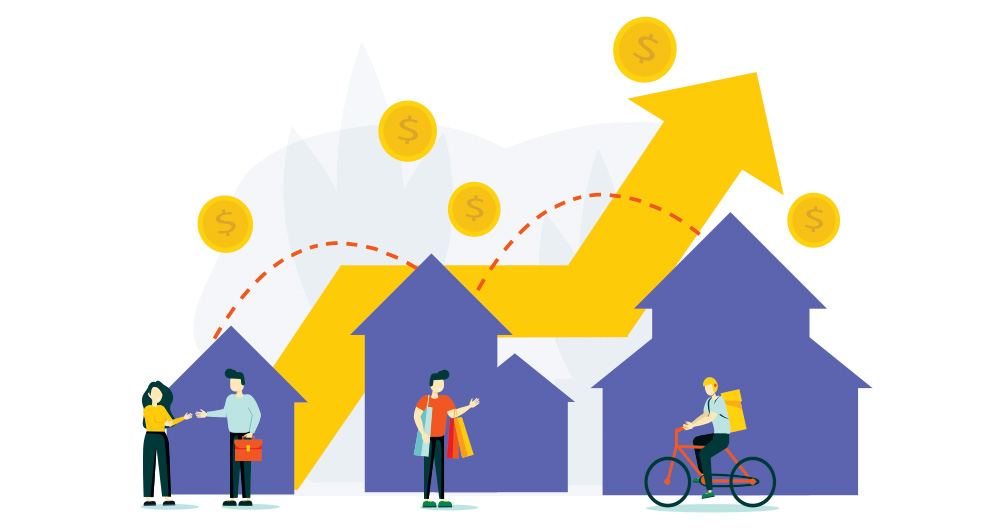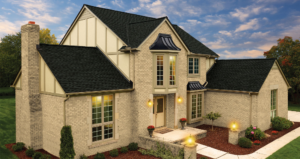Housing Figures: New Home Sales Historically High in 2020
February 2, 2021

Housing Figures is our monthly round-up of the top news stories related to residential new construction spending and the latest market numbers.
2020 will be remembered for a number of historic moments. Within the housing industry, a positive for home builders has turned out to be the demand for new homes. New home sales were up nearly 20 percent from 2019, and numbers continue to indicate 2021 will keep the momentum going.
New home sales show continued strength
New home sales were historically high in 2020. The Census Bureau is reporting that 811,000 new homes were sold in 2020. That’s 18.8 percent above 2019’s figure of 683,000. The rise is likely due to low mortgage rates and low inventory of existing homes, as well as a desire for never-lived-in homes thanks to the pandemic. [HousingWire]
The New Home PSI fell in December, still up significantly year-over-year. Zonda’s New Home Pending Sales Index fell 3.6 percent from November 2020, however it’s still up 36 percent from December 2019. The index is based on the number of new-home sales contracts signed across the U.S. The best new home markets in December were Jacksonville, Florida, Raleigh, North Carolina, and Atlanta. [Builder]
Home prices surge (again)
The price of homes increased nearly 10 percent in November. The latest U.S. Case-Shiller Home Price Index has hit another high, with home prices rising 9.49 percent in November 2020. That represents a new high since February 2014. The index is 26 percent above the peak reached prior to the Great Recession. Phoenix continues to have the fastest growth in prices with a 13.8 percent surge in November. [CoreLogic]
General home sales
The index of pending home sales dropped in December. The National Association of Realtors released their latest pending home sales report last week showing a 0.3 percent drop in December 2020. The decline marks the fourth straight month of decreases. However, pending home sales are still up 21 percent year-over-year, indicating the market is performing remarkably well. The only region to see decreases was the Midwest, while pending sales were flat in the West and even rose in the Northeast and the South. [Realtor.com]
Pandemic-driven demand also impacted existing home sales in 2020. Existing home sales were at their highest point in 2020 since 2006 according to the latest numbers. Existing home sales in December were 22 percent stronger than 2019’s levels. December’s existing home sales increased by 0.7 percent from November 2020. Low inventory is an ongoing issue in the existing market, with inventory down 23 percent year-over-year in December, or about 1.07 million homes for sale — an 1.9-month supply. [CNBC]
Not yet a HomeSphere partner?
HomeSphere connects residential construction builders with building product manufacturers to facilitate long-lasting relationships through our award-winning software platforms, My HomeSphere® and HomeSphere-IQ®.
Starts and permits rise
2020 ended on a high note for housing starts. Overall housing starts increased 5.8 percent in December thanks to a strong single-family showing. That represents a seasonally adjusted annual rate of 1.67 million units. Single-family starts increased 12 percent to 1.34 million starts (SAAR). Meanwhile, the multifamily sector decreased 13.6 percent to a pace of 331,000 units. 2020 total housing starts were 1.38 million, a seven percent gain from 2019. About 991,000 of those starts were single-family, while 389,000 represented multifamily. [NAHB Now]
The number of building permits also rose in 2020. It’s estimated that 1.452 million units were authorized by building permits in 2020 — that's a 4.8 percent increase from 2019, which had 1.386 million authorizations. In December, building permits rose 4.5 percent from November 2020 and 17.3 percent from December 2019. Single-family authorizations rose by 7.8 percent in December, representing 1.226 million, while authorizations of building with five or more units were at a rate of 437,000. [Census Bureau]
The housing market gains value
The U.S. housing market gained more value in 2020 than any year since 2005. The housing market gained approximately $2.5 trillion in value in 2020, which represents a larger gain than any year since 2005. It’s likely 2021 will be stronger. The total combined value of all homes rose to $36.2 trillion last year, with more than one-fifth of the total value coming from California where homes are worth a cumulative $7.8 trillion. [Zillow]
The multifamily sector in 2021
Freddie Mac is predicting an improving multifamily sector for 2021. The Freddie Mac Multifamily 2021 Outlook is projecting that rents will increase in most markets and originations will rebound. The report suggests overall multifamily origination will reach $340 billion by the end of the year, which would be up 18.5 percent from 2020. The report also predicts slight improvement for markets like San Francisco and New York when it comes to rent increases and vacancies. Markets in the Sunbelt are expected to see rent growth in both 2020 and 2021. [MHN]
Home builder perspectives
State of the Industry: home builders expect a solid 2021. In our latest State of the Industry report, 80 percent of respondents, who represent home builders across the nation, indicated that 2021 should see positive growth in sales. One-in-five even reported that they’re forecasting sales growth over 20 percent. Builders also reported that the biggest cost challenge will be material prices, like lumber, but 28 percent still indicated their entry-level mix will grow “modestly” or “substantially.” [HomeSphere]



